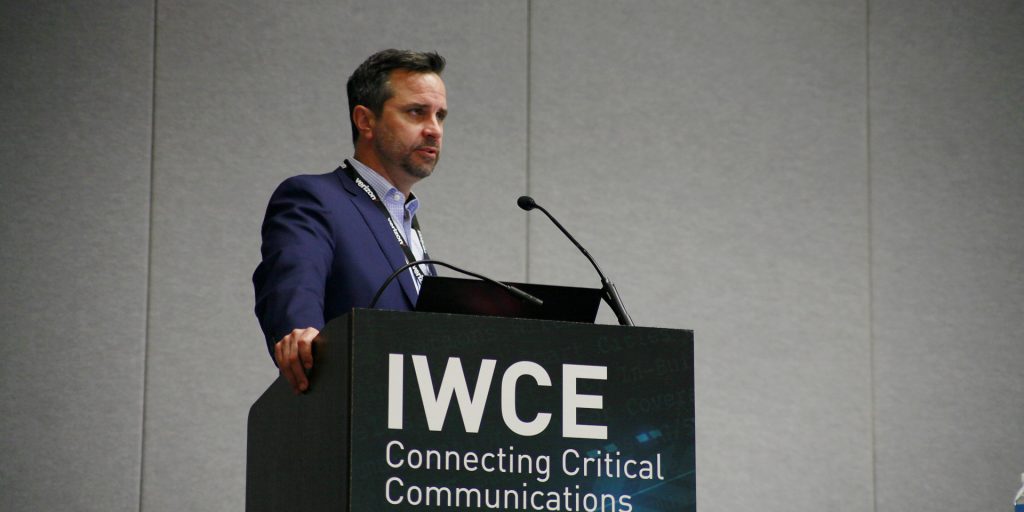IWCE 2022: The future of 5G and its implications for government organizations
These days, 5G dominates discourse and headlines—drawing intense interest from engineers and conspiracy theorists alike. As the fifth-generation technological standard for broadband cellular networks, the implications of 5G are profound and, as of yet, still not completely realized.
“It’s going to be high speed, low latency, and massive scale,” said Bryan Schromsky, managing partner of Verizon’s 5G public sector division in a talk, “5G for public safety and national security—Why network resiliency and reliability matters,” at this year’s International Wireless Communications Expo (IWCE) 2022 in Las Vegas. The expo, which started Monday and is hosted by Urgent Communications and Omdia, American City and County‘s sister organizations, will continue through Thursday.
“When we launched LTE in 2010, you were getting about 5 to 10 megabytes down,” Schromsky said. With 5G, “All of a sudden, you’re getting 300, 400, 500 megabits now.”
While 5G was launched by major carriers including Verizon in 2019, the broader public hasn’t yet experienced it because it’s been limited to 5G millimeter wave (mmWave), a specific wavelength with extremely high bandwidth capacity that’s limited to short distances like a few streets, stadiums and city centers. Notably, Verizon deployed 5G mmWave as an experiment at the most recent Super Bowl in Inglewood, Calif.
The capacity for the average citizen to be able to connect to 5G while on their way to the subway is still a bit of a ways off.
“5G is a 10-year plan. We’re only on year three. There are a lot of things that need to happen,” Schromsky said.
For local and county governments, there are broad implications to the emergence of 5G, as it supports many emerging smart city solutions like remote-driving cars and drones, which require constant and comprehensive connectivity to navigate tight urban environments.
Beyond that, carriers can build out private LTE and 5G networks, such as the one installed at California’s SoFi Stadium.
“A police department training (facility) is a great example,” Schromsky said. “Instead of using WiFi, you’re actually using LTE, private LTE. You get the best of both worlds.”
Other good examples of a private network’s utility for government include hard-to-connect areas like subways or ports. Beyond private networks, modern broadband innovations allow for slicing—an isolated piece of the larger commercial network that’s tailored to meet the requirements of a particular application. Such a development would allow an ambulance company to hold a specific piece of the network for its unique needs—from cameras that display what’s going on in the back of the rig to GPS—or a hospital and its specific needs.
When 5G roles out in full force (an anticipated development in the near future), “The issue you’re going to run into is that you’re going to need all new devices,” Schromsky said. And beyond that, there will undoubtedly be a plethora of yet unrealized cybersecurity concerns.
“It’s going to take time,” he said, noting, “Your threat vector goes up exponentially.”
Meanwhile, connectivity spans many different wavelengths, and only certain devices will benefit from 5G. Others, those that that work well currently, will continue to operate within existing wavelengths.
“A lot of these use cases will never need 5G,” Schromsky sad. Organizations will have “multiple networks to support the” needs of each department.




















